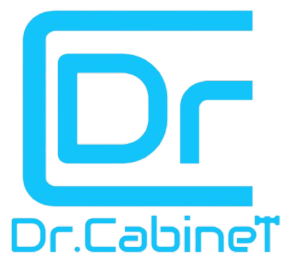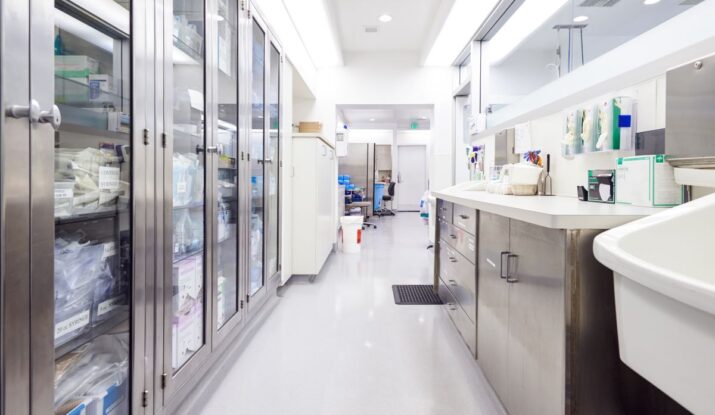Introduction to Medical Storage
Medical storage equipment – it’s the unsung hero of every hospital and clinic. You know when the bandages, medications, and tools are neatly organized in proper medical storage solutions, everything just works better. Good medical storage equipment, like cabinets, shelves, and medical carts, actually solves multiple problems at once. They save space (because, let’s be honest, healthcare facilities are always tight on room). They keep medical supplies protected and ready for use. They also make inventory control a whole lot simpler.
Investing in quality healthcare storage pays off every single day in smoother operations and better patient care. It’s one of those behind-the-scenes upgrades that make everyone’s job easier.

Why Smart Healthcare Storage Solutions are Essential
Let’s face it—in healthcare, how you store supplies isn’t just about neatness. It’s about saving lives, saving time, and even saving money. Here’s why smart healthcare storage solutions make all the difference:
Here’s the real deal about good medical storage:
-
More Space, Less Stress
Medical facilities are crowded places. The right storage means:
- Wall-mounted cabinets save floor space
- Rolling carts keep supplies mobile
- Smart shelving fits more in less space
No more tripping over equipment or playing hide-and-seek with supplies!
2. No More Wasted Time
When everything has its place:
- Nurses find what they need instantly
- Emergencies get faster responses
- Patient care never gets delayed
3. Fewer Mistakes, Less Waste
Good storage means:
- No mixing up similar-looking meds
- No using expired supplies by accident
- No losing track of inventory
Bonus: Locking cabinets keep expensive meds and equipment secure.
4. Built for Real Healthcare Needs
Different areas need different solutions:
- Refrigerated units for vaccines
- Sterile storage for OR tools
- Heavy-duty racks for equipment
Everything stays compliant with healthcare regulations too.
5. Tailored for Healthcare Facilities’ Unique Needs
Hospitals, clinics, and surgery centers all have different storage demands. The right solutions ensure:
- Compliance with OSHA, HIPAA, and Joint Commission standards.
- Easy access during critical moments.
- Long-term durability (because healthcare storage takes a beating!).
6. Better for Patients & Staff
When storage works right:
- Doctors have what they need when they need it
- Nurses spend less time searching
- Patients get better care faster
The Simple Truth
Great medical storage isn’t about organization – it’s about creating spaces where healthcare teams can do their best work. And that’s something worth investing in the best cabinet making companies.
Types of Medical Storage Solutions in Healthcare Facilities
Let’s break down the different types of storage that keep different departments in hospitals, clinics, and pharmacies running smoothly.
- A. Medication Storage Cabinets
- Locking medicine cabinets – Keeps narcotics and controlled substances secure (no more missing pills)
- Fridge/freezer units – For vaccines, insulin, and other temp-sensitive meds (because spoiled meds help no one)
- Pharmacy shelving – Heavy-duty racks that hold tons of bottles without collapsing
- B. Medical Supply Storage Carts
- Wall-mounted cabinets – Perfect for small clinics where floor space is gold
- Rolling medical carts – ER and ICU heroes that transport supplies right to the bedside
- Disposable supply bins – Organized storage for PPE, syringes, and other daily-use items (no more rummaging through boxes)
- C. Lab & Hazardous Material Storage
- Chemical-safe cabinets – Stores flammable and corrosive stuff without melting or leaking
- Biohazard fridges – Keeps lab samples intact and contamination-free
- Sharps containers – Because nobody wants accidental needle sticks
- D. Digital & Smart Storage Systems
- Automated dispensers – High-tech cabinets that track and hand out meds (like a vending machine for drugs)
- RFID-tagged storage – Scans items automatically so staff always know what’s in stock
Key Features to Look for in Medical Supply Storage Systems
Let’s be real – not all storage is created equal, especially in healthcare. You need solutions that can take a beating, keep things secure, and make your job easier. Here’s what to keep an eye out for:
Durability & material
First off, this stuff needs to last. Go for stainless steel or heavy-duty materials that won’t rust or fall apart after a few months. Bonus points if it has antimicrobial protection, because nobody wants their storage spreading germs.
Security & lockability
Security’s a big deal too, especially when you’re dealing with controlled meds. You want cabinets that lock up tight but are still quick to open when you need them. No flimsy locks that break after a week.
Adjustable shelving & modular designs
Your needs change constantly, so your storage should be able to change with them. Look for systems where you can move shelves around or add compartments as needed.
Compliance with FDA/CDC guidelines
And of course, it’s gotta be up to code. Whether it’s medication storage or biohazard containment, your solutions need to check all the FDA/CDC boxes. Because the last thing you need is a violation notice during inspection.
At the end of the day, good medical storage should make your life easier – keeping supplies organized, secure, and ready when you need them, without any headaches. That’s the difference between equipment that just sits there and storage that actually works for you.
Best Practices for Organizing Medical Storage Equipment
Organized medical storage is important for patient safety, regulatory adherence, and working efficiency. Here are key strategies to optimize your storage systems:
- Implement FIFO (First-In, First-Out) Inventory Management
- Systematically rotate stock to use older items first
- Prevents costly waste from expired medications and supplies
- Particularly crucial for time-sensitive products like vaccines and lab reagents
- Standardize Labeling & Color-Coding Systems
- Use clear, consistent labeling for all storage areas
- Color-code by:
- Medication type (e.g., red for cardiovascular, blue for respiratory)
- Supply category (e.g., green for PPE, yellow for disposables)
- Urgency level (e.g., fluorescent tags for emergency medications)
- Include expiration dates prominently on all labels
- Conduct Regular Audits & Inventory Checks
- Perform weekly visual inspections of high-use areas
- Schedule monthly comprehensive inventory reviews
- Maintain digital logs for:
- Stock levels
- Expiration dates
- Reorder points
- Assign accountability for specific storage zones
- Implementation Benefits:
- ✔ Reduces medication errors
- ✔ Minimizes supply waste
- ✔ Ensures regulatory compliance
- ✔ Improves staff efficiency
- Implementation Benefits:
These fundamental practices in healthcare facilities can create storage systems that support both clinical excellence and operational performance.
Controlling Costs in Medical Facilities
A vital component of healthcare facility management is to control costs; good storage solutions can help to lower costs significantly.
Maximizing storage space helps healthcare organizations to cut waste, limit unneeded purchases, and manage expenses.
Effective storage also means that it can assist health care facilities to minimize their labor expenses, enhance efficiency, and productivity.
Also, effective storage methods can assist in preserving the life of equipment and supplies in healthcare facilities hence avoiding frequent and expensive replacements.
Healthcare facilities can save more money and enhance patient care by embracing efficient storage solutions.
Frequently Asked Questions
How do you store medical supplies?
Keep them labeled, dry, and organized—like a well-stocked pantry but with more bandages and fewer snacks.
Do hospitals have supply rooms?
Yep—think of them as giant medical closets, with everything from bandages to IV fluids neatly stocked.
What are the 5 storage guidelines of medical supplies?
First in, first out (oldest supplies get used first). Lock up controlled meds. Label everything clearly. Keep clean and dirty supplies separate. Store at the right temp (no melting or freezing!).
How should medical supplies be stored?
Store medical supplies in a clean, dry, temperature-controlled area, organized by type and expiry date, with sterile items kept sealed and separate.
What is the best storage for medicine?
A locked cabinet for pills, a fridge for anything temperature-sensitive, and a visible spot for emergency meds—no guesswork.
Conclusion
High-quality patient care along with reduced costs and superior efficiency, stem from efficient medical storage solutions in healthcare facilities. Healthcare facilities that optimize storage space and enhance workflows and supply access will achieve better patient outcomes while decreasing expenses. Healthcare facilities can reach their objectives through the implementation of medical storage equipment which includes cabinets, shelves, medical carts, and inventory management tools.
Healthcare facilities that invest in efficient storage solutions achieve threefold benefits: enhanced financial performance coupled with waste reduction and superior patient care outcomes. Healthcare facilities need efficient medical storage equipment to succeed in the current quick-paced and dynamic healthcare environment.




